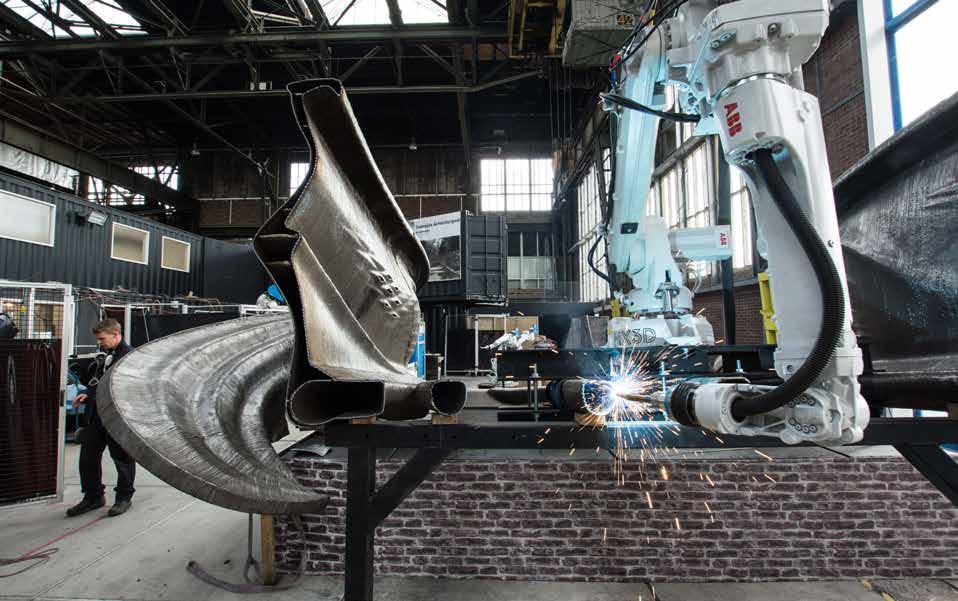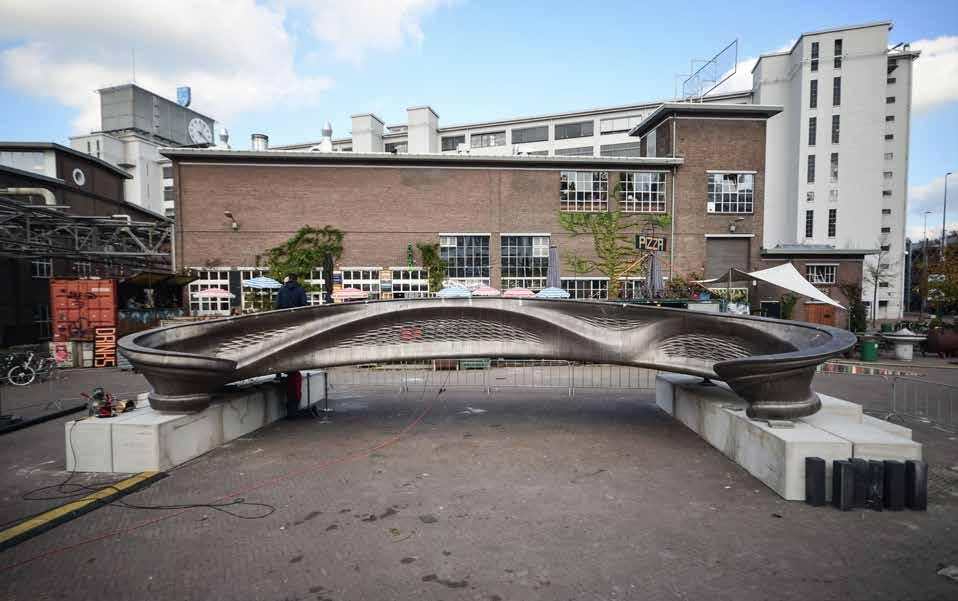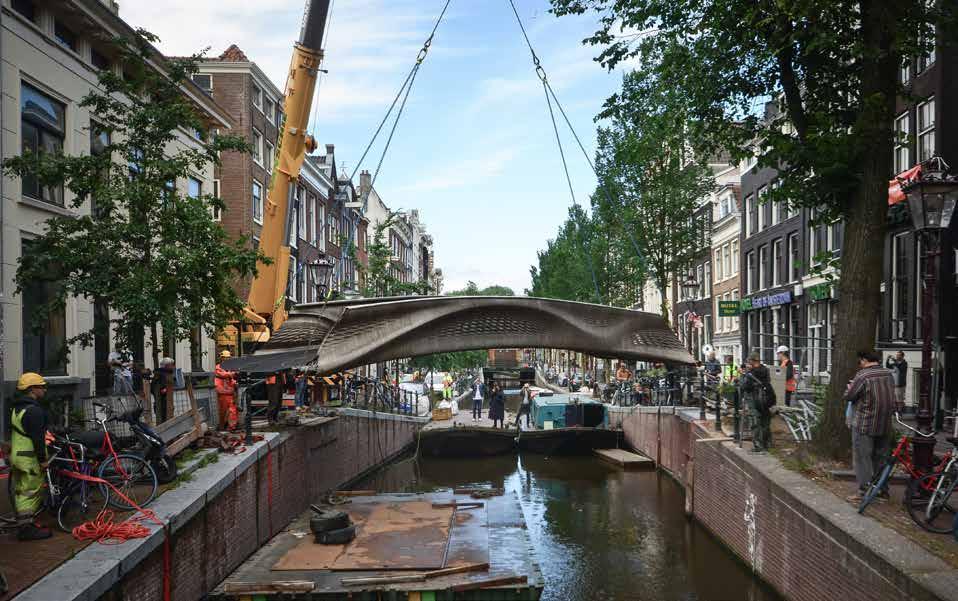
3 minute read
World First: 3D-printed steel bridge opened
from IM20214EN
15 July 2021. Queen Máxima opens the world’s first 3D-printed steel bridge in Amsterdam (Photo: MX3D/Adriaan de Groot))
World first: 3D printed steel bridge opens
Advertisement
On 15 July, Her Majesty Queen Máxima opened the world’s first 3D-printed steel bridge in Amsterdam. The bridge was manufactured by the Amsterdam scale-up MX3D and is placed on the Oudezijds Achterburgwal in Amsterdam. The bridge is a prize-winning design by Joris Laarman Lab and the result of a collaboration between, among others, MX3D, software company Autodesk, chief engineer Arup, steel concern ArcelorMittal, the Municipality of Amsterdam and the University of Twente. Over the next two years, this pedestrian bridge will replace the old bridge that will be externally restored.
According to MX3D this project has shown that it is possible to print large sizes in metal. With this new technology metal structures can be produced, without wasting material and flexible in shape and style. In the future, it will be possible to produce with less material and in a completely new design language. Laarman’s futuristic design is 12.2 metres long, 6.3 metres wide and weighs 6,000 kilos. MX3D made this design possible, with Arup as chief engineer, by turning welding robots with intelligent software into industrial 3D printers. Layer by layer, they created the organic shapes. The bridge, which remains the property of MX3D, was extensively tested by Imperial College London, with the help of the University of Twente, before being installed. To ensure the safe construction of the bridge, Imperial College London conducted research into its strength and structure. The test took place in September 2019 at the University of Twente. There, the full load-bearing capacity of the bridge was tested to ensure safety and functionality. In addition to the design, the monitoring of the bridge is also innovative. The bridge is equipped with smart sensors to collect data for maintenance. For this reason, the University of Twente, together with MX3D, Autodesk and Arup, designed, developed and tested a permanent sensor network and eventually installed it on the bridge. Besides the design, the monitoring of the bridge is also innovative. The bridge is equipped with smart sensors to collect data for maintenance. Software company Autodesk and The Alan Turing Institute have created a so-called Digital Twin of the bridge. This allows the safety

Manufacturing robot in action at MX3D (Photo: MX3D/Olivier de Gruijter)

Above: The steel 3D-printed bridge during the Dutch Design Week in 2018 Below: Placement of the bridge Oudezijds Voorburgwal (Photo’s: Adriaan de Groot)
status to be monitored in real time, including the simulation with different conditions and loads. With the data, the municipality can also measure traffic flows across the bridge and the level of congestion in the area. In addition, Amsterdam Institute for Advanced Metropolitan Solutions (AMS Institute), in cooperation with TU Delft, University of Twente and the municipality of Amsterdam, among others, is conducting research into the ethical consequences and regulation of smart infrastructure in the city. Questions such as: ‘What do we as citizens actually want to be measured?’ and ‘Who owns the collected data?’ and ‘Do we really want a city full of sensors? The bridge will become a true ‘Living Lab’. Tree years ago, the bridge won the Public Award during the Dutch Design Week 2018.

UTwente> MX3D> Joris Laarman>
Video (MX3D/YouTube
The MX3D project was made possible thanks to the close cooperation with partners: Autodesk, Heijmans, Joris Laarman Lab and ArcelorMittal and the support of Lead Structural Engineer Arup, The Alan Turing Institute Data Centric Engineering Programme, Lloyd’s Register Foundation, Air Liquide, ABB Robotics and Lenovo. Major contributors included: Force Technologies, HBM, Oerlikon, Faro Technologies, STV, Oerlikon Welding, MousBV and Plymovent. Public partners: Delft University of Technology, Imperial College London, University of Twente, Amsterdam Institute for Advanced Metropolitan Solutions (AMS Institute) and the municipality of Amsterdam.

